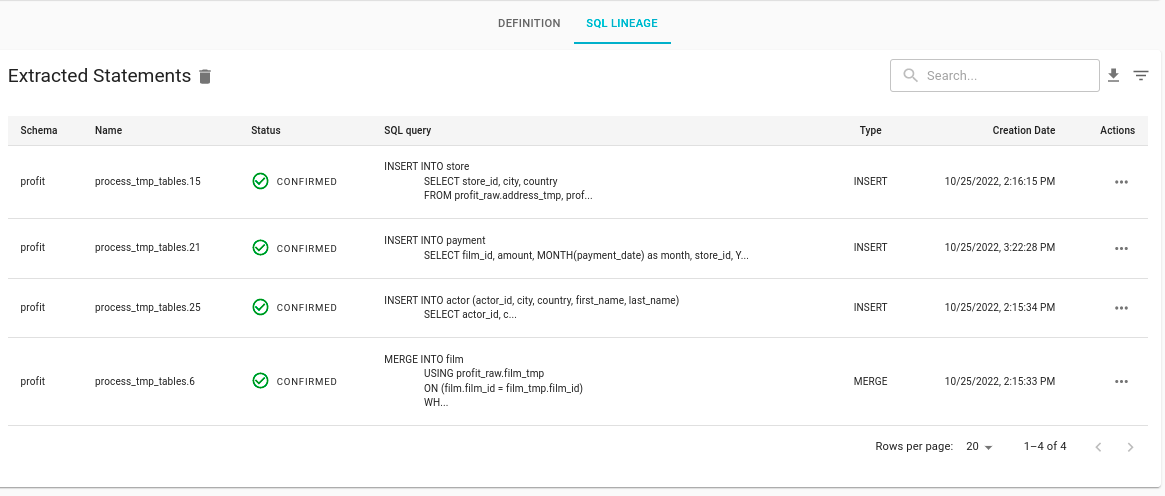Routines, Scripts, Stored Procedures
System Routines in Blindata
In Blindata, a system routine embodies a stored procedure or function within a physical system, intricately linked to a specific system. These routines can either be seamlessly imported from the source system through the crawling module or defined manually within the registry.
To access the repository of system routines, effortlessly click on the “Routines” button in the list object, as demonstrated in the figure, or navigate through the detail page of the associated system.


The presented page showcases a comprehensive list of system routines affiliated with the system, unveiling essential details such as:
- Schema: Identifying the schema to which the system routine belongs.
- Name: Displaying the distinctive name of the system routine.
- Type: Indicating whether the routine is a PROCEDURE or FUNCTION.
- Status: Reflecting the current status of the system routine, influenced by the SQL lineage module analysis.
- Description: Offering a succinct description of the system routine.
- Issue: Highlighting any potential issues associated with the routine.
- Actions: An interactive icon, triggering three essential actions on the system routine:
- Detail: Directing to the detailed page.
- Modify: Facilitating modifications to the system routine.
- Delete: Removing the system routine from the repository.
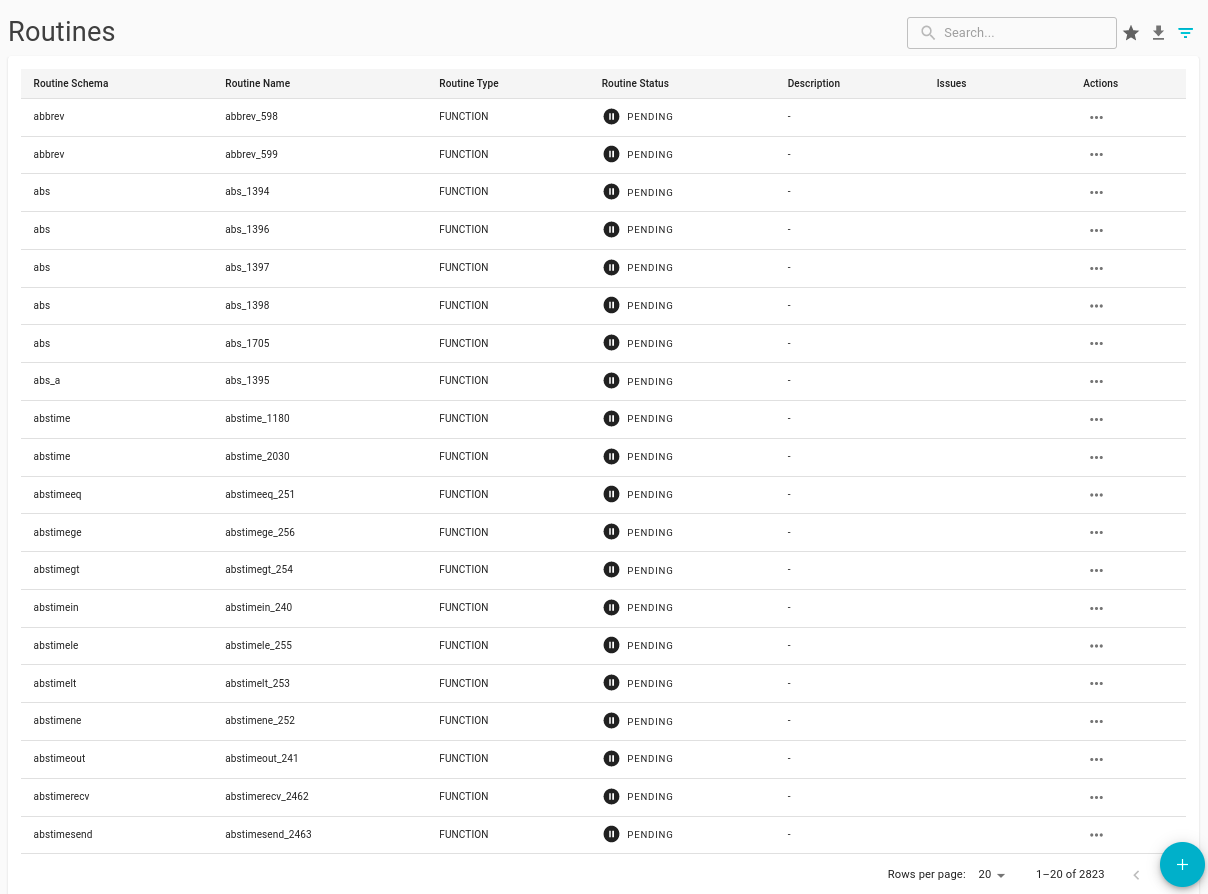
Filtering options are conveniently available, utilizing the filtering modal and/or the text search field, allowing you to search based on:
- Schema
- Catalog
- System
- Type
- Status
- Date created/modified within the source system

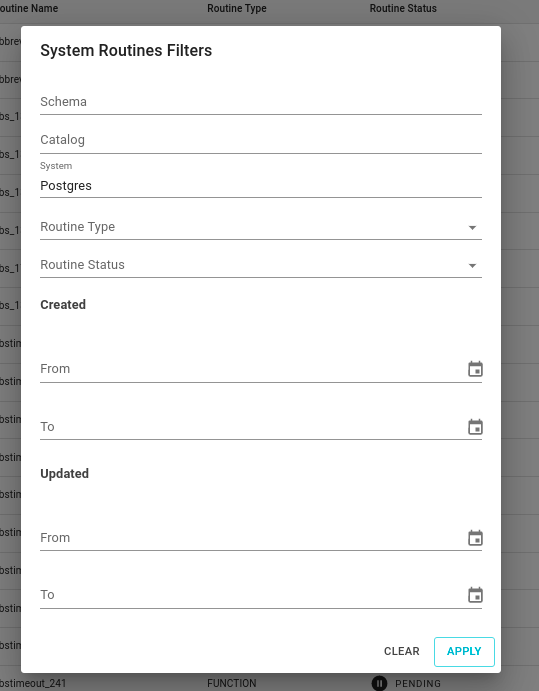
How to create a System Routine
Adding a new system routine can be achieved through two distinct approaches:
- Automatically: Utilizing the crawling module.
- Manually: Through the definition modal.
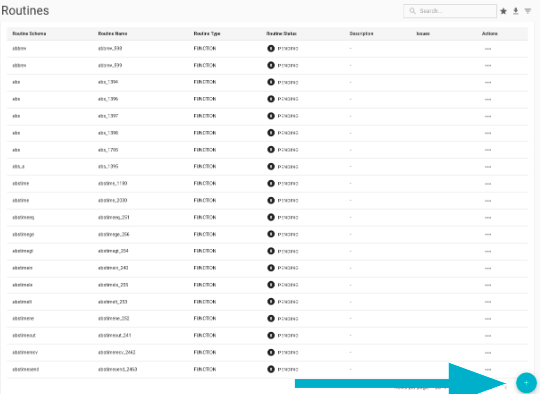
For manual creation, navigate to the system routine registry section and initiate the process by clicking the dedicated button shown in the figure. The creation modal prompts the input of essential details:
- Name: The distinctive name of the system routine.
- Schema: The reference schema.
- Catalog: The reference catalog.
- Description: A concise description.
- System: The associated system.
- Type: Designating whether it’s a PROCEDURE or FUNCTION.
- Definition: The code of the system routine, composed in any language and encompassing SQL statements.
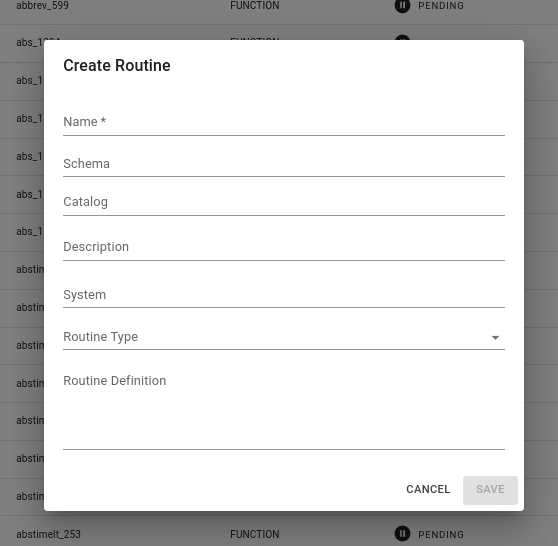
Analyze a System Routine
Delving into the detail page of a system routine is effortlessly achieved by selecting it from the registry.
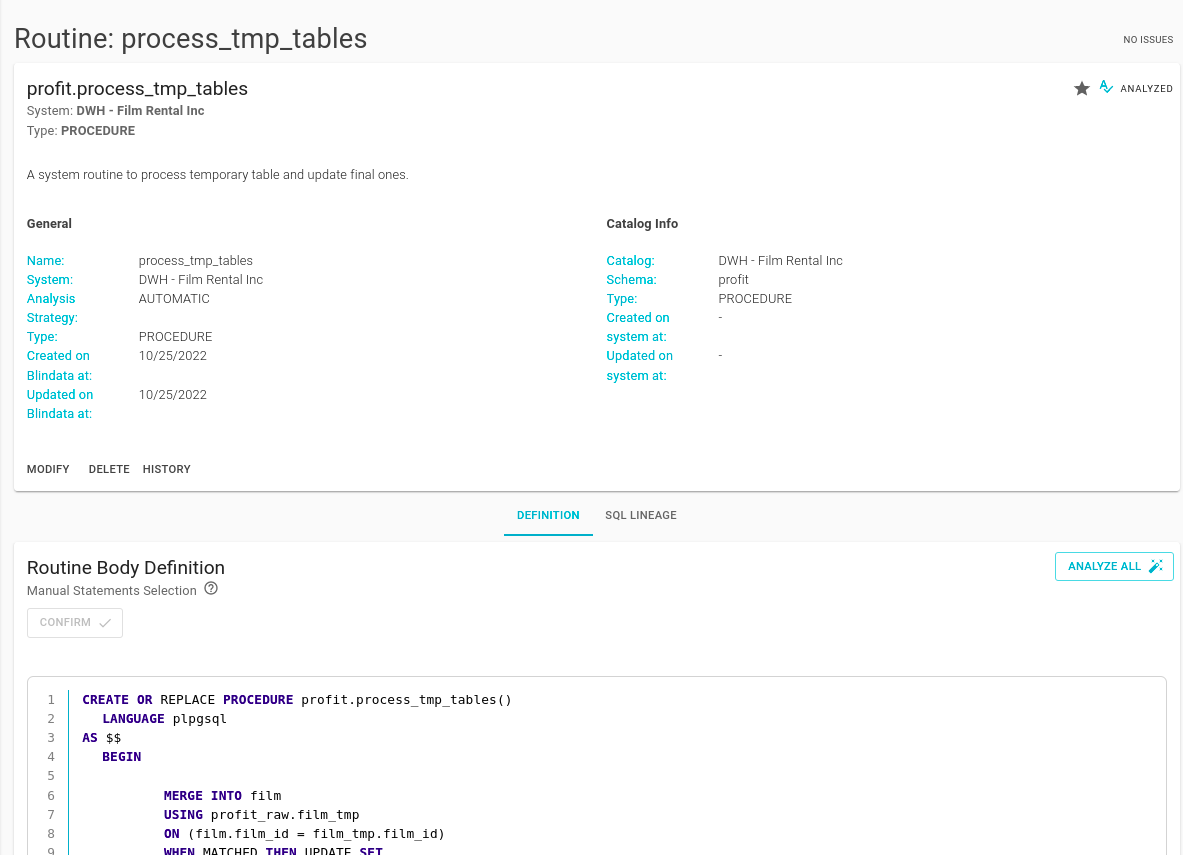
The page unfolds into a static and interactive section. The first one offers general information:
- Name
- System
- Type
- Bucket analysis strategy
- Creation and modification date in Blindata
- Catalog
- Schema
- Creation/Modification date within the source system
The upper right corner specifies the status of the system routine – in our example, “Analyzed”.
The interactive aspect allows a closer examination of the routine definition.

Within this section, actions tied to the SQL lineage module are available, including the analysis of routine definitions to extract query statements (refer to SQL Lineage - Routines Guide ).
The “SQL Lineage” tab facilitates the visualization of extracted statements, allowing for easy filtering by name, processing status, query type (e.g., Insert), creation and modification date. Clicking on the trash bin button removes all associated query statements, resetting the routine’s status to “Pending.”
